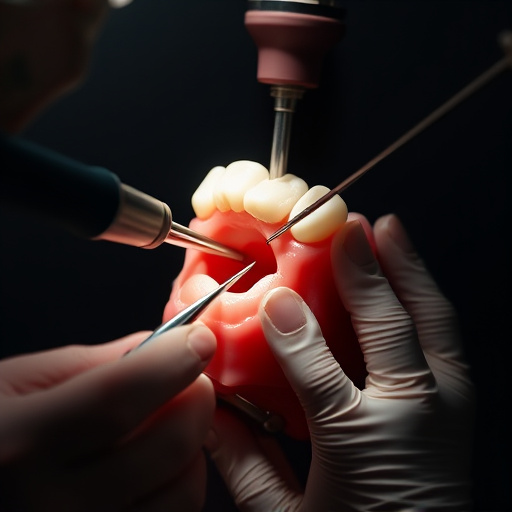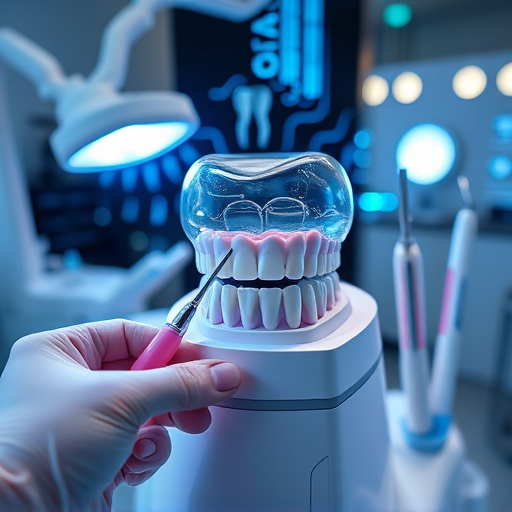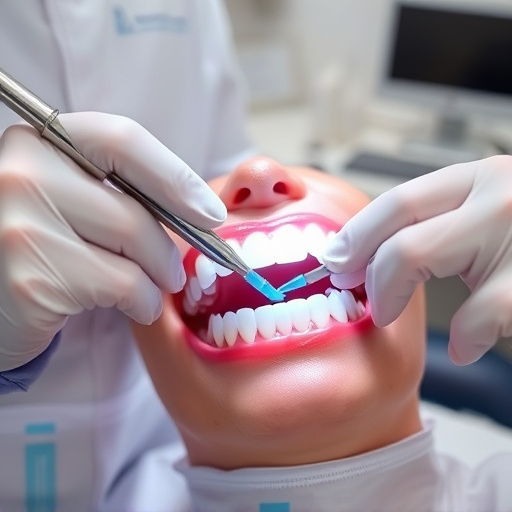Dental implants, a long-lasting solution for missing teeth, involve surgically placing a titanium post into the jawbone, fusing through osseointegration for support. After healing, an abutment connects to the post, followed by placement of a custom-made dental crown. Proper aftercare includes excellent oral hygiene, pain management, and gradual return to normal eating habits while avoiding rigorous activities on the implanted side. Regular dentist check-ups are crucial for monitoring healing and addressing any issues promptly.
Dental implants offer a permanent solution for missing teeth, enhancing both oral health and aesthetics. This step-by-step guide delves into the process of getting dental implants, beginning with an initial consultation where a dentist assesses your mouth’s health and determines implant suitability. The procedure involves surgery to place titanium posts in the jawbone, allowing osseointegration. Once healed, a custom-made crown is attached, resulting in a natural-looking, long-lasting tooth replacement. Effective aftercare ensures successful integration.
- Understanding Dental Implants: The Basics
- Step-by-Step Dental Implant Procedure
- Aftercare and Recovery for Dental Implants
Understanding Dental Implants: The Basics
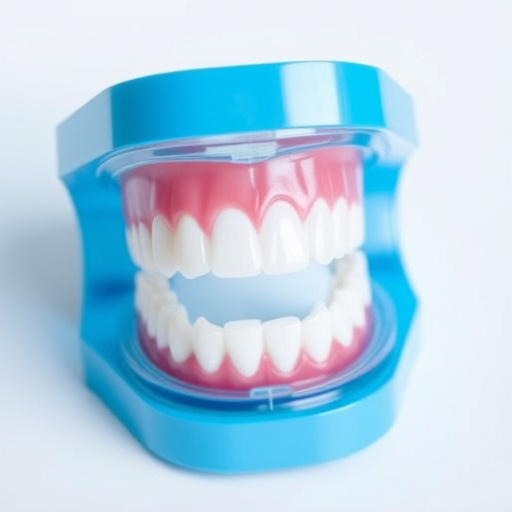
Dental implants are a popular and effective solution for missing teeth, offering a permanent and aesthetically pleasing alternative to traditional dentures or bridges. The procedure involves surgically placing a small titanium post into the jawbone where the tooth once stood. This post acts as an artificial root, providing stability and serving as a base for a custom-made dental crown. Over time, the implant integrates with the bone, creating a solid foundation that supports the new tooth just like a natural one would.
This advanced restorative dentistry technique is not limited to adults; children’s dentistry also benefits from implants in certain cases where primary teeth are lost early or due to medical conditions. Unlike dental fillings or bridges, which cover or bridge over damaged or missing teeth, implants offer a more permanent and functional solution. The procedure requires careful planning and execution, ensuring the best chance of success and long-term health for the implant site.
Step-by-Step Dental Implant Procedure
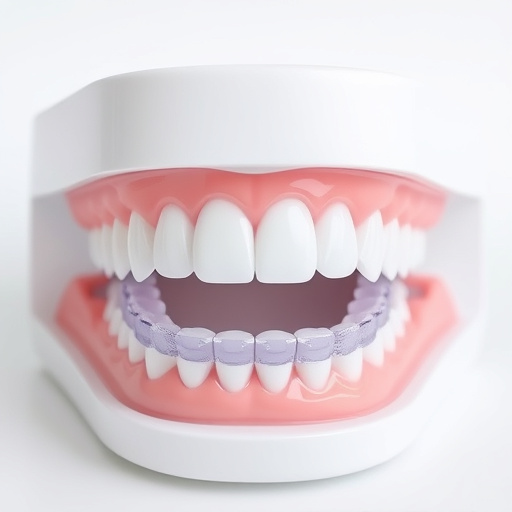
The step-by-step process of a dental implant procedure involves several precise stages to ensure a successful and long-lasting solution for missing teeth. It begins with an initial consultation where your general dentist or a specialist assesses your oral health, discusses your medical history, and determines if dental implants are the right choice for you. If approved, the next step is often a CT scan or 3D imaging to create detailed models of your jawbone and nearby structures, guiding the surgical placement.
Surgery is typically performed under local anesthesia, involving the insertion of a titanium post into the jawbone where the missing tooth root would be. This post fuses with the bone through osseointegration, creating a solid foundation for the dental crown that will eventually replace the lost tooth. Following this procedure, a period of healing is required to allow the implant site to recover and strengthen. Once healed, an abutment is attached, which serves as a connection point for the final dental crown, ensuring a secure fit. Finally, the custom-made crown is placed, matching your natural teeth in color, shape, and size, providing both functionality and aesthetic restoration.
Aftercare and Recovery for Dental Implants

After receiving dental implants, proper aftercare is essential for a successful recovery and to ensure the long-term success of the procedure. Patients should be instructed to maintain excellent oral hygiene, including regular brushing and flossing around the implant site. This helps prevent infection and promotes healing. Using an antiseptic mouthwash can also reduce the risk of complications.
During the initial stages of recovery, it’s common for patients to experience some discomfort and swelling. Over-the-counter pain relievers can help manage these symptoms. It’s crucial to avoid rigorous activities and heavy chewing on the implanted side for a few weeks to allow the titanium post to integrate with the jawbone seamlessly. Patients should also stick to soft or cool foods until healing is complete, gradually reintroducing solid foods as comfort allows. Regular check-ups with the dentist are vital to monitor the healing process and ensure any potential issues are addressed promptly.
Dental implants represent a modern solution for missing teeth, offering a long-term, natural-looking alternative. Understanding the step-by-step procedure involved—from initial consultation and surgical placement to osseointegration and final restoration—is key to ensuring a successful outcome. Proper aftercare and recovery are also vital components of the process, enabling patients to enjoy their new, functional, and aesthetically pleasing smiles for years to come.








